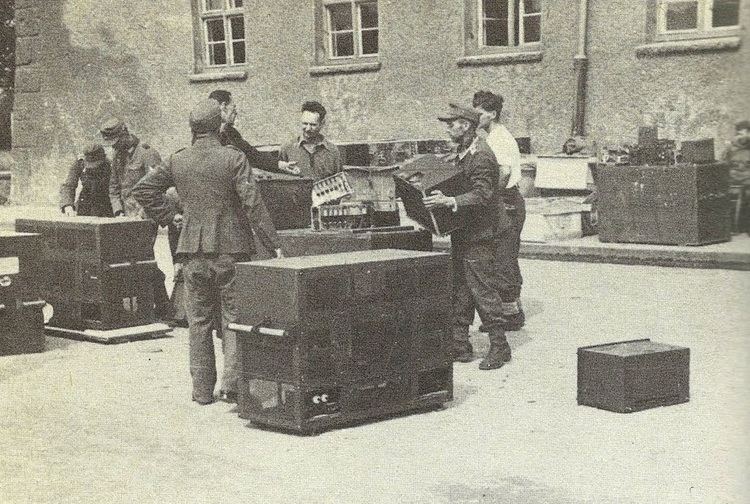 | ||
Fish (sometimes FISH) was the UK's GC&CS Bletchley Park codename for any of several German teleprinter stream ciphers used during World War II. Enciphered teleprinter traffic was used between German High Command and Army Group commanders in the field, so its intelligence value (Ultra) was of the highest strategic value to the Allies. This traffic normally passed over landlines, but as German forces extended their geographic reach beyond western Europe, they had to resort to wireless transmission.
Contents
History
In June 1941, the British "Y" wireless intercept stations, as well as receiving Enigma-enciphered Morse code traffic, started to receive non-Morse traffic which was initially called NoMo. NoMo1 was a German army link between Berlin and Athens, and NoMo2 a temporary air force link between Berlin and Königsberg. The parallel Enigma-enciphered link to NoMo2, which was being read by Government Code and Cypher School at Bletchley Park, revealed that the Germans called the wireless teleprinter transmission systems "Sägefisch" (sawfish), so the name "Fish" was adopted for this traffic. The enciphering/deciphering equipment was called a Geheimschreiber (secret writer) which, like Enigma, used a symmetrical substitution alphabet. The teleprinter code used was the International Telegraph Alphabet No. 2 (ITA2)—Murray's modification of the 5-bit Baudot code.
When the Germans invaded Russia, during World War II, they began to use a new type of enciphered transmission between central headquarters and headquarters in the field. The transmissions were known as Fish at Bletchley Park. The German army used Fish for communications between the highest authorities in Berlin and the high-ranking officials of the German Army on the field. The Fish traffic which the personnel at Bletchley Park intercepted, contained discussions, orders, situation reports and many more details about the intentions of the German Army. However, these transmissions were so challenging to decrypt that even with the assistance of decryption machines, such as Colossus, the messages could not be read until several days later. “Vital intelligence was obtained about Hitler’s intentions in the run up to D-Day 1944.”
Tunny
The NoMo1 link was initially named Tunny, a name which went on to be used both for the Lorenz SZ40/42 machines and for the Bletchley Park analogues of them. The NoMo1 link was subsequently renamed Codfish. A large number of Tunny links were monitored by the Y-station at Knockholt and given names of fish. Most of these were between the Oberkommando der Wehrmacht (German High Command, OKW) in Berlin and German army commands throughout occupied Europe. Cryptanalysis of the Lorenz cipher at Bletchley Park, assisted initially by a machine called Heath Robinson and later by the Colossus computers yielded a great deal of valuable high-level intelligence.
Tunny decrypts provided high-grade intelligence in an unprecedented quality. Walter Jacobs, a US Army codebreaker who worked at Bletchley Park, wrote in an official report on the operation to break Tunny that in March 1945 alone 'upward of five million letters of current transmission, containing intelligence of the highest order, were deciphered'.
Sturgeon
This was the name given to traffic encoded with the Siemens and Halske T52 Geheimschreiber. In May 1940, after the German invasion of Norway, the Swedish mathematician and cryptographer Arne Beurling used traffic intercepted from telegraph lines that passed through Sweden to break this cipher. Although Bletchley Park eventually diagnosed and broke Sturgeon, the relatively low value of the intelligence gained, compared to the effort involved, meant that they did not read much of its traffic.
Thrasher
This was the name used for traffic enciphered on a Geheimschreiber that was probably the Siemens T43 one-time tape machine. This was used only on a few circuits, in the later stages of the war and was diagnosed at Bletchley Park, but considered to be unbreakable.
List of senior involved staff at Bletchley Park
Including both executives and cryptographers on FISH (Tunny) in the Testery.
